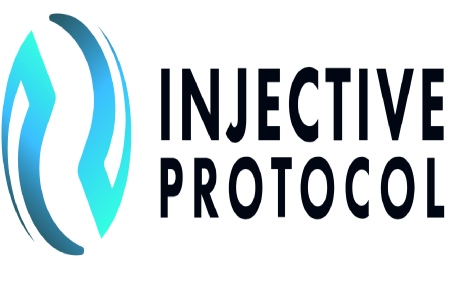INVESTMENT FUNDS (OPC)

In this article, we will help you understand this topic. So, let's start with the objectives. The purpose of these funds is to pool risk, allowing investors to invest small amounts in a highly diversified portfolio.
Depending on the nature of the investment, a distinction is made between:
- - UCITS (Undertakings for Collective Investment in Transferable Securities), which may contain stocks, bonds or both.
- - AIF (Alternative Investment Funds), which pool funds other than transferable securities: OPCI (organisms for collective investment in real estate), SCPI (civil real estate investment companies), etc.
There are two forms of OPC:
- - FCP (Fonds Communs de Placement) , in which investors are co-owners of the fund.
- - SICAV (variable capital investment company) , in which investors are shareholders of the fund, the capital varies depending on the entry/exit of investors.
But in practice, investing in an FCP or SICAV makes little difference to investors.
SICAV and FCP can be "active" funds . The aim of the active fund manager is to outperform the stock market index used as a reference point. To do this, he chooses securities to include in his portfolio and then changes it over time.
In fact, research shows that very few active fund managers manage to outperform the market represented by stock market indices. In addition, active fund management incurs numerous costs (entry fees, exit fees, management fees, various charges, etc.) which heavily penalise the investor.
Thus, for several years we have seen the development of "passive" management funds: trackers, which are UCIs listed on the stock exchange. ETFs (Exchange Trader Funds) are primarily trackers, although there are some actively managed ETFs.
Trackers can technically be categorised as FCPs or SICAVs. The big difference lies in their method of management: trackers are content to replicate the stock market index automatically, which allows them to significantly reduce their operating costs.
Trackers are thus index funds: unlike active funds, which seek to outperform indices (in which they most often fail), trackers simply replicate the performance of indices.
So, trackers (or 'passive' funds) not only very often get better performance than UCIs which are actively managed, but also for much lower fees. This is why they are enjoying increasing success.
Key risks affecting UCIs:
- - Risk of capital loss (as in the case of equities)
- - Discretionary management risk (for active funds only): the manager can make the wrong choices, with a negative impact on results.
Crypto-assets
Crypto-assets (also called cryptocurrencies) are digital assets based on blockchain technology .
Blockchain (blockchain) is a computer protocol that provides transparent and secure storage of digital assets in the form of sequential blocks linked together.
Crypto-assets are materialised by tokens that are issued during an ICO (Initial Coin Offering, the equivalent of an IPO) and which can then be freely traded.
The crypto-asset market is less regulated and supervised than traditional financial markets: thus, unlike the issue of shares, crypto-assets do not require an AMF visa.
Investing in crypto-assets provides the opportunity to participate in and finance a wide variety of projects. There are thousands of cryptocurrencies, each carrying a unique project (not always being alternative payment systems as one might think).
As with venture capital investments, the value of the most promising crypto-assets can increase significantly as some of them seek to revolutionise certain parts of society. But they could also lose all their value very quickly .
This is a very young market, and not yet very mature. In addition, most crypto-asset tokens are owned by a very small number of people, which can make them very volatile (much more volatile than stocks) and therefore very risky.
The main risks affecting crypto-assets are:
- - Risk of capital loss
- - Risk of hacking, theft of crypto-assets on an exchange.
- - Risk of fraud: In a market that is still poorly regulated, some crypto-assets are purely speculative in nature, are not based on any particular (or serious) project and can disappear overnight.
Crypto-assets are complex and risky products in a poorly regulated market. They need to be fully understood before delving into them.
To better understand how they work, you can read my summary of the book Successful Investing in Bitcoin and Cryptocurrencies.
Stock indices
A stock market index is a basket of securities used to track the performance of a group of assets representing a particular market or part of a market.
In financial markets stock indices are used as a benchmark (reference point) for evaluating investment performance.
The first stock market index to appear was the Dow Jones Industrial Average (DJIA). Created in 1885 by Charles Dow, editor of the Wall Street Journal, and Edward Jones, an investor, it consists of 30 of the most representative companies in the American economy.
Each index is based on a different numerical value. The value is not very important because it primarily serves to materialise the relative percentage change in the index from one day to the next (or from one year to the next).
Thus, the CAC 40 was born in 1987 with a base numerical value of 1,000 points. It currently has a value of more than 6,500 points.
One of the best-known indices in the world is the Standard & Poor's 500 (S&P 500) which is often used to refer to the American market. Among the major indices we also find:
- Nikkei 225 (Japanese market index)
- FTSE 100 (UK market)
- CAC 40 (French market)
- DAX 30 (German market)
MSCI Emerging Markets (emerging markets).
Indices are often calculated with weighted averages: each security has a different weight relative to its market capitalisation in the index.
Thus Apple, with a market capitalisation of US$2.5 billion, has a much higher weight in the S&P 500 (over 6% of the index) than Xerox, with a market capitalisation of just US$4 million (and an index weight of 0.01%).
Index funds (trackers) automatically replicate the evolution of indices, allowing investors to get their results without having to buy dozens or hundreds of individual securities.
Index investing is an investment philosophy based on the use of index funds, which seeks to passively follow the evolution of the market rather than actively try to outperform it .
Exchange traded orders
To invest in financial assets, you need to place stock market orders with a broker, CTO or PEA, which acts as an intermediary in the market.
A stock market order contains several pieces of information:
- - The relevant financial asset
- - Price
- - Quantity
- - Date of validity of the order
There are different types of orders, which allow you to buy/sell financial assets based on certain criteria:
- - Market order: allows you to buy/sell at the best price available in the market. This order is the simplest, it has priority over other order types and is usually able to be executed immediately.
- - Limit order: This allows you to buy/sell by setting a limit price which must not be exceeded. This allows you to control the price, which may be useful for illiquid or volatile assets. However, setting a price limit can prevent the order from being executed if there is no available price in the specified limit.
- - Best limit order: Similar to a limit order, except that the limit is not selected by the investor, but is the opening price.
- - Threshold order: allows you to buy/sell in the market as soon as the prices reach a certain threshold. This order is often used as protection against a rapid reversal of the trend.
- - Cut-off range order: Allows you to set both the price limit and the cut-off range. This order is a combination of limit and stop orders and allows you to control the strike price, protecting you from a trend reversal.
Market and limit orders are the two order types most commonly used by investors in the markets. Traders often use more complex orders (range or trigger level).
In life insurance, there is only one way to buy/sell which is more or less the same as a market order, except that it may take the insurer several days to execute the order.
Some securities are eligible for SRD (deferred settlement service). SRD allows you to buy/sell on credit for a fee, distinguishing between payment and delivery of the security.
SRD is used in particular to sell a security short (bet on it falling). You can then sell securities that you do not already own in order to buy them back later at a lower price.
Speculators often use short selling to take advantage of a stock crash or general panic in the stock market. Short selling tends to exacerbate declines, which is why it is sometimes temporarily banned by regulators.
You can also familiarize yourself with fraudulent brokers.





Post a Comment